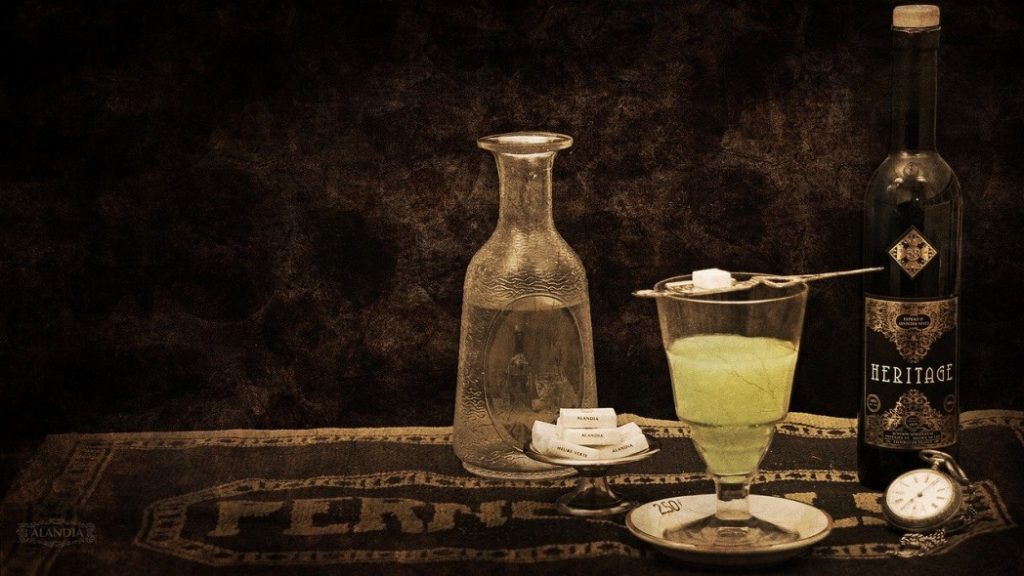The first thing you should know about absinthe is – it is NOT hallucinogenic. In the 19th century, before absinthe production was regulated some producers used industrial-grade non-potable alcohol and flavored it with commercial oil extracts, says Breaux, research scientist and absinthe expert.
Both the oils and the spirits were clear, so the color and clouding effects were artificially created with copper sulfate and antimony trichloride, respectively. When consumed regularly, this mixture could cause copper toxicity and antimony poisoning—both of which can cause hallucinations.
Absinthe has been a Hollywood hype for many years and now with many brands here in the US, we may now experience the sought after liquor on its own or in cocktails!
1) Absinthe was invented at the end of the eighteenth century. Absinthe was actually invented by a French doctor named Pierre Ordinaire. He invented absinthe by distilling wormwood and several other herbs into an alcoholic base. Although this may seem strange in today’s modern world of medicine, at the time it was considered a viable remedy for patients with various ailments.
2) Although it contains special properties that other alcoholic drinks do not, absinthe actually contains an extremely high amount of alcohol. To put it in perspective, most brands of gin, whiskey and vodka contain approximately forty percent alcohol. Depending on the brand of absinthe, it can contain anywhere from fifty to seventy percent alcohol. Therefore, although you should enjoy any absinthe experience you have to the fullest, make sure you enjoy it responsibly and do not attempt to drive a car after spending an extended amount of time with the Green Fairy.
3) Absinthe has been associated with the Green Fairy since the nineteenth century. The French originally gave absinthe the nickname La Fee Verte, which the English later translated into the Green Fairy. However, Green Fairy is not the only nickname that has been given to absinthe over the years. Aleister Crowley gave absinthe the nickname Green Goddess, while many artists and poets coined the term Green Muse for absinthe.
4) Modern science has actually attempted to take a stab at explaining exactly how the Green Fairy works. In 2000, scientists studied the effects of the wormwood herb on the human brain. The study was conducted by a variety of researchers at Berkeley, the University of California and Northwestern University Medical School in Chicago. After extensive research, the scientists found that wormwood (along with other components of absinthe) cause “CNS cholinergic receptor binding activity.” In laymenís terms, absinthe actually improves the cognitive functions of the brain!








Leave a Reply